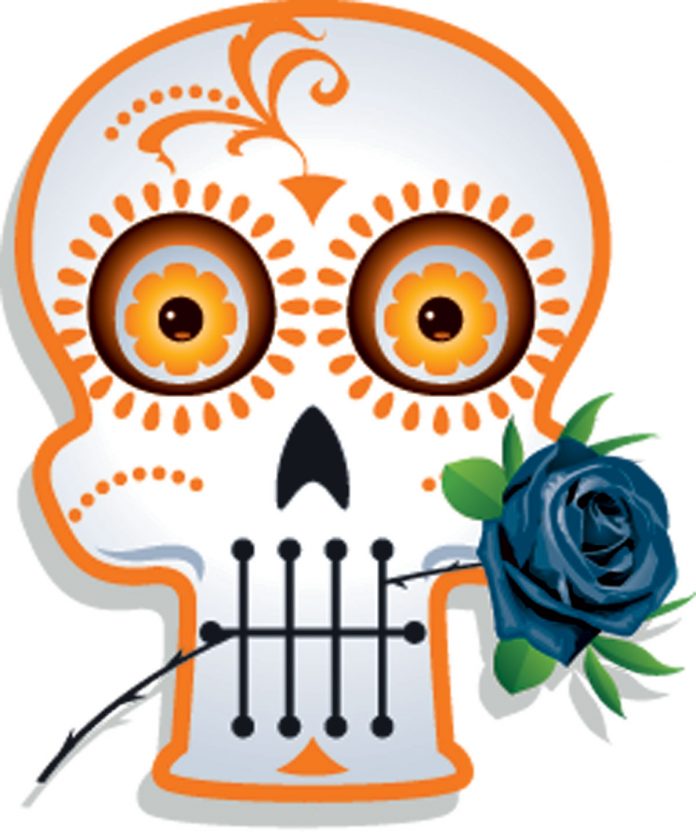Dia de los Muertos, the time-honored “Day of the Dead” ritual, traces its roots back to the Aztecs honoring their deceased some 3,000 years ago.
It’s a celebration of life and death marked by remembering and preparing special foods in honor of those who have departed. It is believed the spirits of the dead visit their families on Oct. 31 and leave on Nov. 2.
Though similar to American Halloween with its themes of death and spirits, El Día de los Muertos is neither morbid nor gloomy, but a festive remembrance of those departed.
Dia de los Muertos celebrates the lives of the deceased with food, drink, parties, and activities the dead enjoyed in life. While the holiday originated in Mexico, it is celebrated all over Latin America with colorful calaveras (skulls) and calacas (skeletons).
The Day of the Dead in pre-Hispanic times was observed by Mexican people maintaining deep and personal times with their dead. In fact, family members were often buried directly underneath their homes.
When the colonizing Spaniards arrived, they brought with them their Catholic customs, including All Souls’ Day and All Saints’ Day. Mexicans eventually blended their strong spiritual ties to the dead with the influencing Catholic holidays of All Souls’ and All Saint’s Day.
Holiday observers believe that during the Day of the Dead, spirits return to Earth for the day to be with their families. Little angel (angelitos) spirits arrive on Oct. 31 at midnight and stay for 24 hours. Adults come the next day and stay through Nov. 2.
Dia de los Muertos honors the dead with festivals and lively celebrations. A a typically Latin American custom, it combines indigenous Aztec ritual with Catholicism brought by Spanish conquistadores.
Dia de los Muertos recognizes death as a natural part of the human experience, a continuum with birth, childhood, and growing up.
On Dia de los Muertos, the dead are also considered to be a part of the community, awakened from their eternal slumber to share celebrations with their loved ones left behind.
The most familiar symbol of Dia los Muertos may be the skeletons and skulls, which appear everywhere during the holiday taking the form of candied sweets, parade masks and dolls. Calacas and calaveras are almost always portrayed as enjoying life, often in fancy clothes and entertaining situations.
An annual Dia de los Muertos remembrance ceremony will be celebrated at Greenwood Memorial Park and Motuary, 4300 Imperial Ave., from noon to 3 p.m. Oct. 28 and is free to the public.

